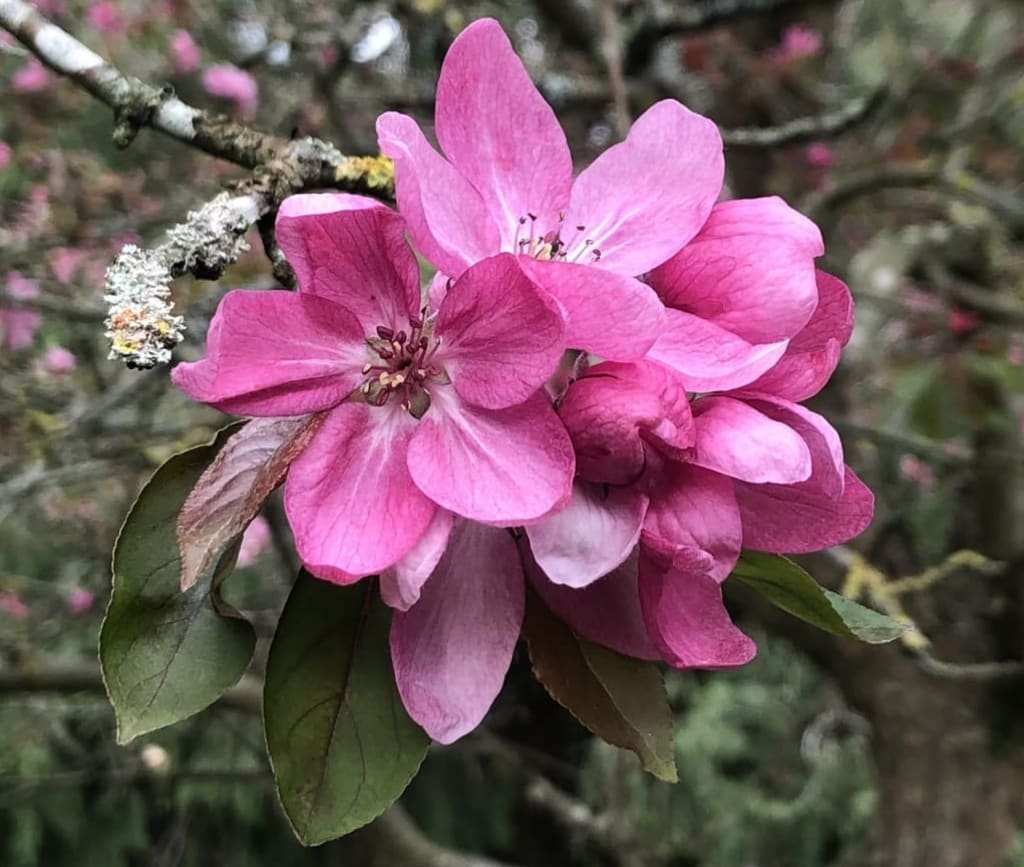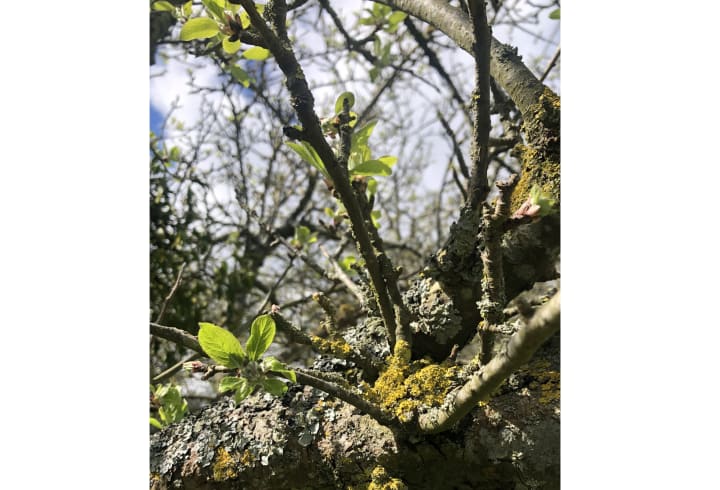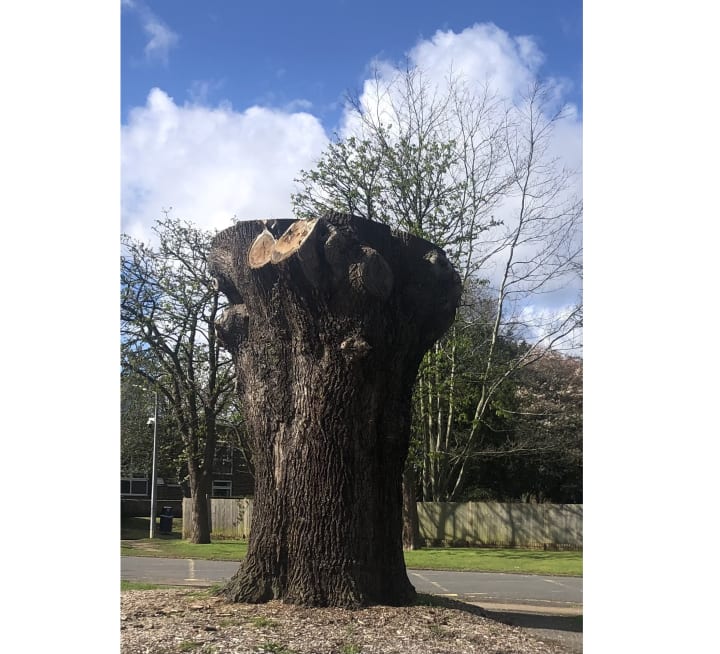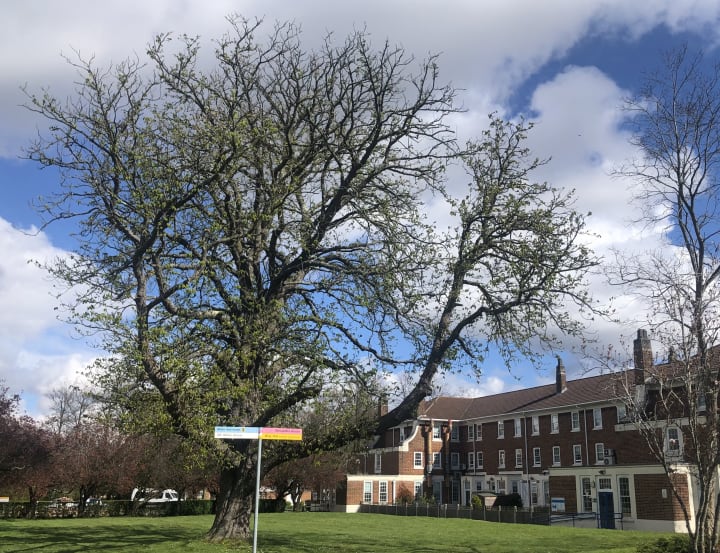Blooming in Bethlem
A photographic walk around the beautifully managed hospital grounds of Bethlem Royal in Beckenham

Always a delight to wander around parklands, gardens and other open spaces in the springtime. Such a riot of colour and a pleasant assault on the senses. In such surroundings who can resist whipping out their smart phone and taking a few snaps as a reminder of what springtime has to offer.
This particular trip took me around the splendid gardens and grounds of the Bethlem Royal Hospital in Beckenham, a small town bordering South East London and Kent. Spoilt for choice when it comes to where to point that lens. And as I have written before, these days you don't need any fancy equipment to take great photographs, just a keen eye for detail and framing and a willingness to take risks and be bold.

When I visited the hospital grounds, which are open to use by considerate walkers, there were few trees in blossom and so I kept my eyes open for any that looked like good subjects. Not least this crab apple tree. From a distance, it does not make a huge impression but, closer in, it starts to capture the imagination more. If you look at the featured image above, you will see how close I cut into the action. And what action. Not only do you have a stunning image of the vibrant colours from the blossoms, there is also the intricate detail from the delicate lichen flora growing out of the branches. Had it been a warmer day, or I if I had been a bit more patient, there would also have been a few bees busy among the pollens. I did see a few bees buzzing about but was not quick enough to snap them in the right place.

On the subject of lichens, here is another shot that includes at least two different varieties, one a dark yellow, the other a grey-blue colour. The host is an aging apple tree to be found in one of Bethlem's ancient orchards. One important thing to remember when using a standard phone camera is that there is no point zooming in to a distant subject.
Don't zoom in with a phone camera. If you can't get closer to the subject then take the picture from a distance and crop the image later.
Most camera phones do not have zoom capability. If you try to zoom, all that is happening is that the camera is cropping the image down to the size that you select. You will get no more detail by zooming in. You would be better off taking the picture at a distance and then cropping it later with a simple picture editing package. Better still, walk in closer to the subject (if you can) and take a much closer shot. Remember to hold your phone as steady as possible, supporting your arm on a fencepost or other solid object if you can.
Here is the wide image of the tree in the orchard for comparison.

This stunning, mature orchard is yet to break out into blossom, and so I enhanced the image with a low viewpoint, taking in a patch of glorious narcissi. Don't be afraid to experiment with view points and perhaps take several shots from different angles, left and right, high and low, keeping an eye on what is in the background and foreground, as well as what the light is doing and whether your main subject is lit or in shadow.

When taking photographs of trees it is worth noting unusual trees or those that might not match the typical image of a beautiful tree with leafy limbs waving about in the wind. This oak tree stump caught my attention because of the pattern of the bark. One of the best features of oak trees, I always think, and so it is good to be able to capture this. To me this tree, despite its lack of limbs, is truly majestic, as only and English Oak can be. That mighty trunk conveys solidity, literally and figuratively, and it is a lovely feature to preserve for staff, patients and visitors to enjoy.
Despite the hard prune, no doubt for simple safety reasons, the tree is still very much alive. I would estimate that it is around 120 years old and perhaps it is good for many more yet. Not only that but, as with all trees, even when you cut them right down, even fell them, they remain hosts to so much more life. There is, for instance, a bramble growing out of the top of this stump, as you will see if you look closely. There will also be insects, arthropods, molluscs, lichens, mosses, and of course fungi as the solidity of the structure declines. Even when you can no longer see a stump above ground, the roots will remain host to tendrils of the many fungi tendril that helped to feed and water it in full bloom.
Finally, a more traditional oak tree picture, taken only a few paces away from the stump. This one stands behind the main hospital administration block.

In some ways the signpost detracts from the geometry of the oak, but this is a functional space so I figured why not include some of that functionality? The building on the right, the tree to the right and the treeline to the left, all help frame the final image, which was deliberately cropped to include them. When framing and cropping an image, always think about whether you need to have some vague detail in the edges to focus attention into the central image.
If you are an occasional user of your phone camera, I hope that these tips have helped encourage you to make more of this feature. A few simple techniques can make a huge difference to the resulting photography. You don't need to be an expert to take great phone photos but you should consider how to use simple tips and tricks to enhance your technique.
You might also like to take a look at some more hints and tips for phone photography with this article I wrote a short while ago:
I am not a professional photographer and am more than happy if you would like to use any of the above images for social media posts or, in the case of my Vocal buddies, to illustrate any of your stories. Please feel free but please credit the source either with something like "photo: RGT" or image: Ray Taylor. If you can add a link to this story, that's great and many thanks but please don't worry if not.
Happy snapping
Ray
About the Creator
Raymond G. Taylor
Author based in Kent, England. A writer of fictional short stories in a wide range of genres, he has been a non-fiction writer since the 1980s. Non-fiction subjects include art, history, technology, business, law, and the human condition.






Comments (3)
I usually zoom rather then take a photo first and then crop later. My phone does have a good zoom feature. But I'd love to try out what you said and compare the photos. Thank you so much for all the tips and your photos were gorgeous!
Thanks for the English field trip. It was fun and love the pictures.
Beautiful pictures & great tips, Ray.